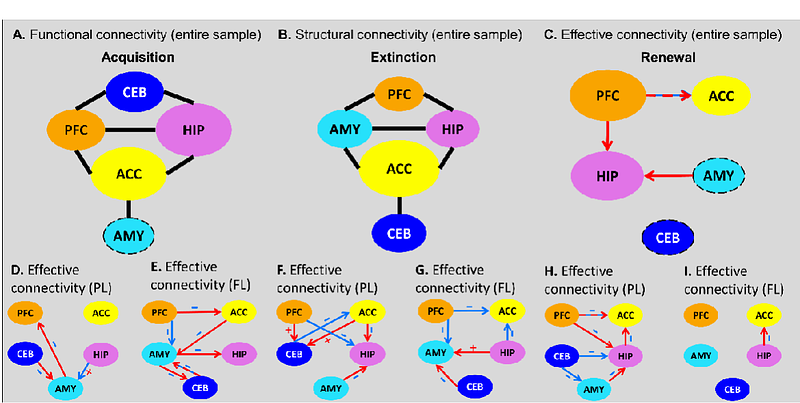Predicting individual differences of fear and cognitive learning and extinction

Predicting individual differences of fear and cognitive learning and extinction
Gomes, C. A.; Bach, D. R.; Razi, A.; Batsikadze, G.; Elsenbruch, S.; Engler, H.; Ernst, T. M.; Fellner, M. C.; Fraenz, C.; Genc, E.; Klass, A.; Labrenz, F.; Lissek, S.; Merz, C. J.; Metzen, D.; Nostadt, A.; Pawlik, R. J.; Penate, J. E. S.; Tegenthoff, M.; Thieme, A.; Wolf, O. T.; Gunturkun, O. E.; Quick, H.; Kumsta, R.; Timmann, D.; Spisak, T.; Axmacher, N.
AbstractThe abilities to acquire new information and to modify previously learned knowledge are critical in an ever-changing world. However, the efficacy of learning is notably variable among individuals, with extinction learning being the epitome of such variability. Abundant studies have identified a core network of brain regions including amygdala, hippocampus, dorsal anterior cingulate cortex (ACC), ventromedial prefrontal cortex (PFC) and, more recently, the cerebellum, as key players in learning and extinction. Yet, the precise interactions within this network and their relationship to individual learning abilities and extinction have remained largely unexplored. In the present study, we examined how functional (FC), effective (EC), and structural (SC) connectivity patterns in the core learning network allow predicting individual differences in the efficacy of learning, extinction, and renewal. Analysing a large dataset of over 500 participants across a multitude of paradigms, our results revealed that FC predicted better acquisition, with a central role of ACC and hippocampus, whereas SC, involving ACC and amygdala, predicted higher levels of extinction learning. EC results suggested a predominantly inhibitory coupling among core learning network nodes, with paradigm-specific EC connectivity patterns predicting learning. Our predictions not only generalised between fear and cognitive predictive learning paradigms but were also successful in predicting learning from task-related FC and simulated data. Together, these results describe the multimodal neural determinants of learning, extinction, and renewal, and may inform individualised interventions for affective disorders based on neural connectivity patterns.